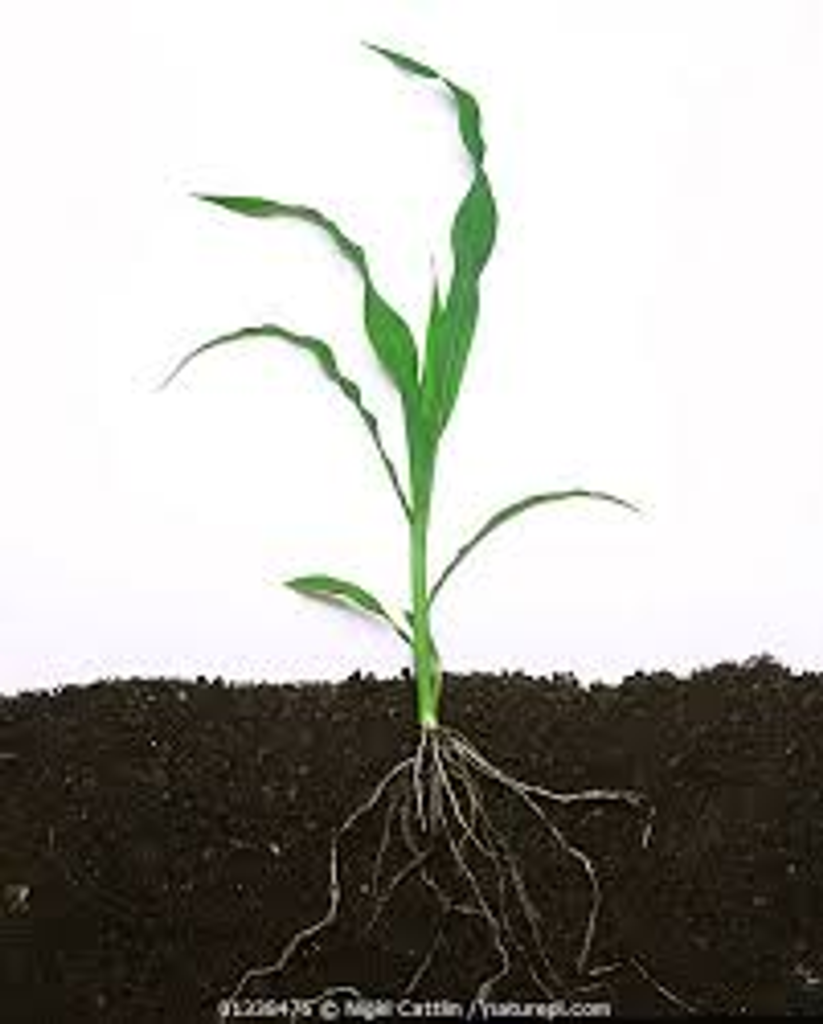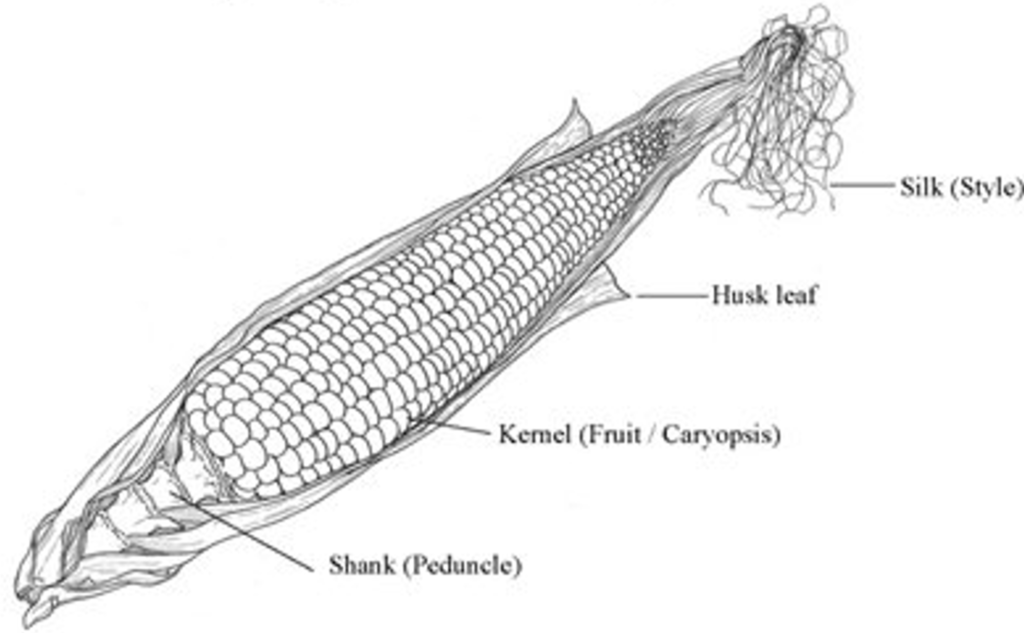Maize (Zea mays), also known as corn, is a tall stout grass ranging in height from 1.2 m (4 ft) to 4 m (13 ft) that produces cereal grain.
| Kingdom | Plantae |
|---|---|
| Division | Magnoliophyta |
| Class | Liliopsida |
| Order | Poales |
| Family | Poaceae |
| Genus | Zea |
| Species | mays |

Fig : A typical maize plant
Maize is an annual monoecious plant having separate staminate and pistillate flowers on the same plant. The leafy stalk of the plant develops male flower clusters, known as tassels, which produce pollen, and female flower clusters, called ears, which make the seeds or kernels. A female inflorescence develops into an ear or corncob, enveloped by multiple leafy layers or husks.
Root system of Maize
A fibrous root system is present in maize plants. Different types and natures of roots are seen in a maize plant throughout its growing period. They are;
a) Seminal roots:
These emerge from the radicle of the seed and grow downward at the time of germination. They are temporary roots that degenerate after completion of the seedling stage.
b) Crown or permanent roots:
They arise from the node of the stem about 1-2 inches below the soil surface as soon as the tip of the coleoptile reaches the soil surface and act as functional roots to help in anchorage, nutrient, and water uptake by the crop.
c) Prop roots:
These roots arise from nodes above the soil surface and help in anchorage of the plant.
Shoot system of Maize
The above-ground parts of a plant. It is also differentiated into the following parts;
a) Stem/stalk:
The plant usually possesses a single main culm with nodes and internodes, with leaves emerging from the nodes and is filled with pith. It can grow to considerable thickness, often 2.5 to 7.5 centimeters (1 to 3 inches) in diameter.
b) Leaf:
Leaves of corn are broad and arranged in two vertical rows on opposite sides of the stalk. The leaf blades have parallel veins with a distinct central rib. The upper surface of the leaf blade is covered in hairs, while the underside is smooth and hairless, sessile, and attached to each node.
c) Inflorescence:

Fig : male inflorescence

Fig : female inflorescence
- The male and female inflorescences are found separately on the same plant. i.e. monoecious plant.
- Male inflorescence develops into tassel consisting of flowers in clusters.
- Each male flower contains three stamens and a rudimentary pistil.
- Pollens from the mature anthers are shed in the wind which continues for about a week and cross-pollination occurs.
- Female inflorescence develops into the ear (cob). Female flowers are borne inside young cobs borne from nodes.
- Each female flower is densely packed in several vertical series on the thick and cylindrical rachis. Style is the long silky filament in clusters that comes out from the tip of the growing cob and is known as silk that receives pollen grains and undergoes fertilization.
- Tassel (anther) matures earlier than silk. i.e polyandry.
d) Kernel or grain:
It consists of endosperm (starch granules), embryo, and scutellum. The kernels can vary in color, including yellow, white, purple, red, and blue, depending on the variety.
A distinctive feature of corn is that, unlike most plants, its kernels are fully enclosed by an outer layer called the husk or shuck, which consists of leaf sheaths that tightly wrap around the kernels.
